15 of the best-produced recordings of all time to test your hi-fi speakers
"The recording is not what one hears, but what one must make others hear" – George Martin
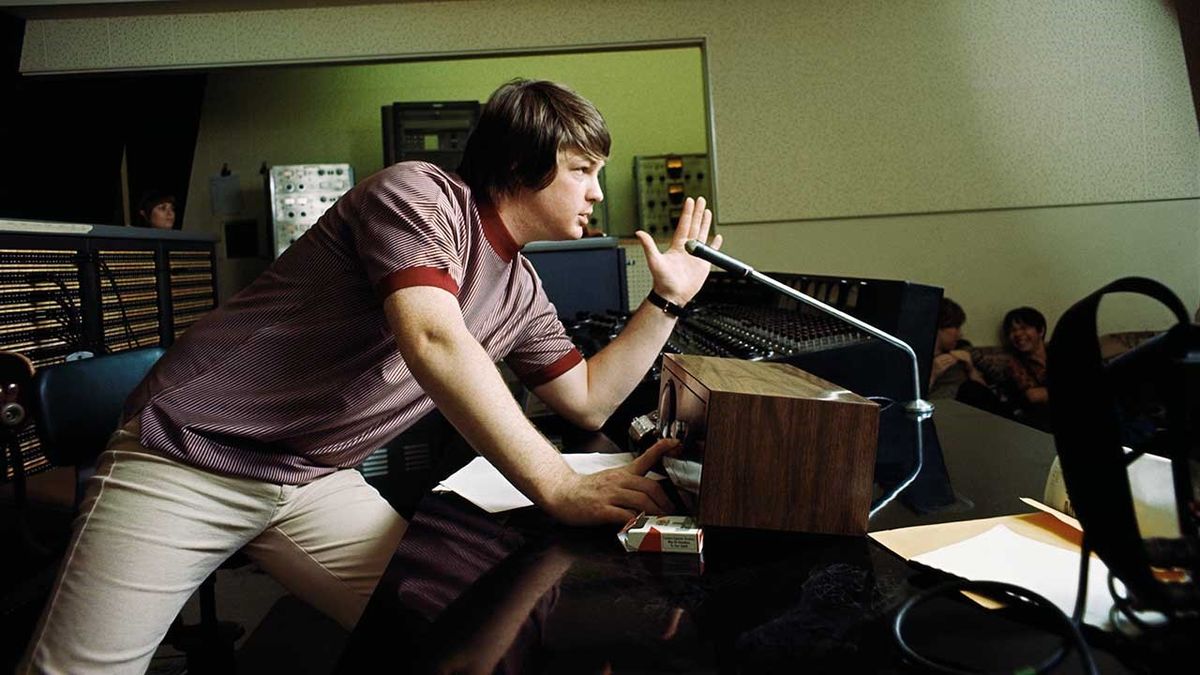
To the uninitiated, it can seem like great music production is an obliquely dark art. Often it appears to demand great technical prowess, sculpting instruments into little perfect sonic bubbles of EQ. But it can easily veer into mystical shamanism, requiring the gentle coaxing of legendary performances from bewildered musicians while unorthodox mic positions abound.
Does a great-sounding album need unearthly sound effects? Or long, meandering takes captured live? Or should it be squeaky clean and sonically pristine? And do they always have to be so very over budget?
Besides long hours of hard work, we consistently find that the best-sounding albums happen when the recording studio is used as another tool to capture and communicate an artist's vision. And of course, one you can enjoy fully on your hi-fi system, through turntables, speakers and/or headphones.
There are far too many excellent examples to cover in one list – if you're looking for some modern classics, check out our selection of the 7 best-produced albums from the 20th Century or head over to our round-up of the best audiophile albums.
But here we've included groundbreakers, some gleaming sound-check classics (consider this your Steely Dan disclaimer), and, hopefully, a few you may not have considered as studio masterworks before. Let us try to persuade you otherwise.
Spilt Milk by Jellyfish (1993)
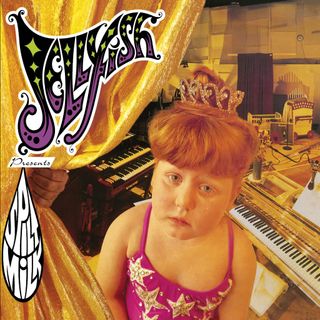
In the early 90s, the West Coast pop-rock group Jellyfish had a short but eventful existence, managing to cram what should by rights be a decades-long creative arc into just two blistering albums. Spilt Milk is the second and considered the band's masterwork, though we recommend also giving their breezier debut Bellybutton a spin.
Combining intricate harmonies, decadent orchestration and sunshine melodies, Spilt Milk was a failure commercially in part due to its unashamed craftsmanship at a time when grunge authenticity was coming to the fore.
Get the What Hi-Fi? Newsletter
The latest hi-fi, home cinema and tech news, reviews, buying advice and deals, direct to your inbox.
Indeed the album is sometimes even accused of committing the cardinal sin of being ‘overproduced’. It bursts with late-stage grandiosity and wears its influences on its sleeve, from opener Hush – a Pet Sounds lullaby with A Day In The Life warped orchestral line – to the bombastic Queen-style romp of Joining A Fanclub including a left-field nod to Roy Wood in the sparkling saxophones lurking in the background of the searing guitar.
But this is much more than an exercise in pomp and pastiche. Producer Albhy Galuten (famed for his work on Saturday Night Fever and creating the first commercial drum loop) carefully captured the full-bodied tones of every single instrument – and there are a lot of them – taking days to perfect each one.
The album’s title was chosen in reference to it being both over budget and behind schedule (a recurring theme in this list), as the Spilt Milk sessions dragged on for six months, while the band agonised over intricate arrangements, retakes and tweaking.
The result is daring excess laced with irony and levity, as sudden shifts and pushy drums make way for bursts of vocal chorus. It's an overload of ideas and sounds that should be in competition with each other but instead delight.
Find Spilt Milk by Jellyfish on Amazon
Listen to Spilt Milk by Jellyfish on Tidal
Sweet Baby James by James Taylor (1970)
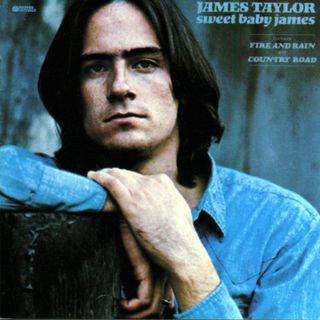
In 1968, after giving a demo tape to Peter Asher, head of A&R at the Beatles' Apple Records, folk singer James Taylor became the first non-British act to be signed to the Fab Four’s fledgling label. After such an auspicious start, the resulting debut album sold poorly as Taylor relapsed into a heroin dependence he had first developed playing Greenwich Village clubs as a teenager and was unable to tour or publicise the release. Eventually, he committed himself into a psychiatric treatment facility and swiftly gained the distinction of becoming the first artist to leave Apple records. To top off an eventful year, in 1969, he broke both his hands and feet in a motorbike accident, leaving him unable to play for several months.
He may have parted ways with Apple, but Taylor continued to work with Asher, who became both his manager and producer, moving into his house to write and rehearse a new batch of songs with a small group of musician friends, including Carole King on piano duties and Randy Meisner of The Eagles. The songs sounded outwardly sweet, but they covered dark subject matter, including his struggles with drug use and the suicide of a close friend in Fire And Rain. He also unleashed, for the first time, his sardonic brand of lyricism with Steamroller, a satire of white blues, and the bleakly happy Sunny Skies.
The entire album was recorded over ten days at the cost of just $7600. Taylor later said that the process “went fast. I had no idea if it was any good or not”. At the end of the sessions and still a song short of the required ten tracks he needed to collect his $20,000 advance from his new label Warner Brothers, Taylor cobbled one together out of three discarded fragments, naming it Suite For 20G, creating one of the album's most joyful moments.
For his work as a producer, Asher used the very lightest of touches, at odds with the ornate, psychedelic folk-rock sound of the time. Centring the record on a balance between Taylor’s plaintive voice and his classically intricate, finger-picked guitar playing, he was deliberately restrained, using accompaniment and effects sparingly. It’s a subtle record that lacks the compressed smoothness and cloak of dense reverb characterising Taylor’s later work but is still filled with expressive, dynamic detail that purposefully serves the songs. Almost chamber-music-like, each element feels quietly intentional, floating untethered with a rich, transparent sound.
The unconventional, understated, yet radio-friendly production of the album left Taylor’s intentions bare and mirrored the frankness of the songwriting. Listeners easily connected with the lyrics which resonated with those for whom the promise of peace and love had fallen short and Sweet Baby James became a hit. Spanning five decades, Taylor’s impressive canon has long been a popular choice among sound engineers tuning large PAs. But although his consistent, present (and some might say bland) sound appears deceptively simple, it warrants much more careful listening.
Find Sweet Baby James by James Taylor on Amazon
Listen to Sweet Baby James by James Taylor on Tidal
Random Access Memories by Daft Punk (2013)
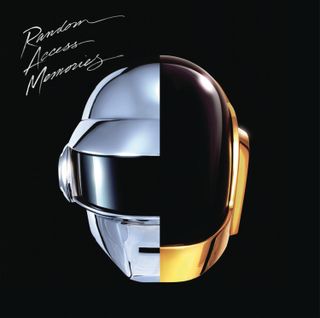
Since recording techniques transitioned from primarily analogue to primarily digital, if production costs for an album start running over six figures, it’s often a sign that something has gone seriously wrong. But for EDM pioneers Daft Punk, the extravagant cost of their final album, Random Access Memories, was entirely necessary for the duo to achieve their goal of making “music that others might one day sample” by paying tribute to what they believe constitutes the greatest era for music - the 1970s and early 80s.
Citing Fleetwood Mac’s Rumours and Pink Floyd’s Dark Side Of The Moon as just some of their reference points, Daft Punk, aka Guy-Manuel de Homem-Christo and Thomas Bangalter, choose to go back to time-consuming analogue recording methods to help them achieve their desired sonic aesthetic, along with hiring some of the finest musicians alive including Off The Wall drummer John Robinson, famed bassist and Easy Lover co-writer Nathan East and, of course, Nile Rogers.
Using parallel signal chains, every element on Random Access Memories was recorded twice: once directly into Pro-Tools and once to 24-track analogue tape, which was then re-recorded into the same digital session, with the sound that best suited the song ultimately chosen for the final mix. Producer Mick Guzauski described the difference between the two renditions thus: “The digital was slightly crisper and the transients were better, but in some cases, we needed the more laid-back sound of the analogue. The important thing was they had that choice for the entire project.”
Far from being a gimmicky imitation, every track on the album delves deep into the essence of distinctive styles and moods, from disco to funk to prog to Lloyd-Webber-levels of musical theatre-style decadence. But the robot voice encoders, synths, guitars, orchestras and choirs all still inhabit the same, immaculately consistent warm, direct and airy sonic universe. Wide-open, punchy and dynamic, with ample breathing space, Random Access Memories is a painstakingly produced exploration of the realm between analogue and digital that re-captures a lost era of music-making and the forgotten art of listening to an album.
Find Random Access Memories by Daft Punk on Amazon
Listen to Random Access Memories by Daft Punk on Tidal
The Dark Side Of The Moon by Pink Floyd (1973)
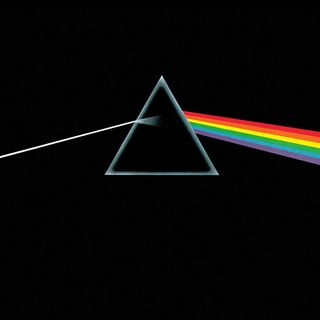
A fair bit of cliché surrounds Dark Side Of The Moon and Alan Parsons' legendary quadraphonic mix. But Pink Floyd's landmark concept album, blending psychedelic rock, spoken word and sound effects, remains a remarkable piece of work that has had an inescapable influence on the music creation and production industry.
Having already stretched technical limitations with their previous two albums, Pink Floyd spent nine months of 1972 at Abbey Road Studios using its state-of-the-art equipment both to capture a musical framework of extended, live in-studio jams and to create the psychological sonic palette that helped unify the album and serve its theme of a descent into madness.
From the eerie layering of interview tapes and that heavily sculpted kick drum heartbeat that opens the album on Speak To Me, to the rhythmic cash register sequence at the start of Money – achieved by painstakingly splicing together Roger Waters’ cash register recordings into a loop of tape 20 feet long, that had to be slung around microphone stands – Dark Side Of The Moon continues to remind musicians just how versatile, expressive and illustrative the studio can be.
Find The Dark Side of the Moon by Pink Floyd on Amazon
Listen to The Dark Side Of The Moon by Pink Floyd on Tidal
Reach by Jacky Terrasson (1995)
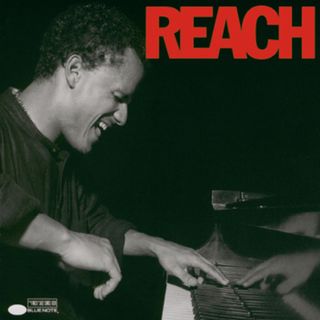
For Reach, Jacky Terrasson's acoustic jazz piano trio was recorded by Mark Levinson (yes, that Mark Levinson) in close quarters, and that's exactly what it sounds like: a piano trio in a small room.
The album was recorded in 1995, at the end of a six-month tour. Terrasson, drummer Leon Parker and bassist Ugonna Okegwo played in the same space, with no partitions, and every accent and offbeat tempo shift reflects the intuitive interaction of players who appear to anticipate one another’s every move.
Levinson used a two-microphone recording technique capturing tracks in single takes. The spontaneous quality of the music is enhanced by the open, airy atmosphere; nothing is close mic’d, and no compression was used.
The dynamic range and subtlety can be a challenge both for your speakers and your ears, but it’s one that pays dividends. Listening to Parker's drums' candid, minimalist sound is particularly revealing; the timbre of each hit shimmers and rings with incredible aural nuance.
Find Reach by Jacky Terrasson on Amazon
Listen to Reach by Jacky Terrasson on Tidal
Toto IV by Toto (1982)

It should come as no surprise that a band made up of session musicians would be capable of creating a great sound. In 1982, though, Toto were struggling to replicate the commercial success of their debut album and were increasingly under fire from cynical critics who mocked them for seeming sterile and pre-fabricated.
Instead of trying to chase acclaim, the band dug their heels in, bringing in even more studio musicians to create a polished, multi-layered record that gave them two of their most successful singles – Rosanna and Africa – and garnered six Grammys, including Producer of the Year for the band.
It's clear that every performer on Toto IV has amazing mastery of their own dynamics; for such an unapologetically pop record, there’s an astonishingly full-sounding acoustic range and lack of compression. But the band also experimented with how technology could help to enhance their vision, and throughout the long recording process, they lived in a Winnebago in the studio's car park, tinkering day and night.
To cram the complicated arrangements onto 24-track machines, engineer Al Schmitt used three separate recorders simultaneously with one track of each machine running SMPTE time code to keep everything in sync. In a technique borrowed from Paul Simon, after each track was finished, the master would be copied and mixed down to continue working with for over-dubs to maintain the sonic integrity of the first generation of tapes.
When it came to mixing, there were still too many tracks to fit on the sound desk. So mix engineer Greg Ladanyi worked in sections, painstakingly cutting verses and choruses together as he went along, with the band lined up to take on fader duties –and the process repeated until absolutely perfect.
Find Toto IV by Toto on Amazon
Listen to Toto IV by Toto on Tidal
Mad Dogs And Englishmen by Joe Cocker (1970)
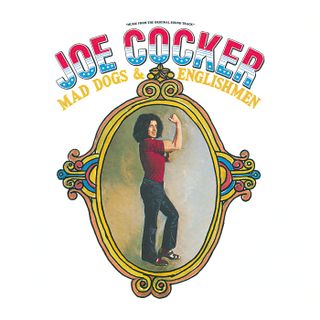
At some point on March 12th 1970, Sheffield-born singer Joe Cocker became aware that he was contractually obliged to perform a North American tour of 48 shows in 52 days, due to start in eight days' time. But unfortunately, he only came to this realisation right after sacking his entire band. So Cocker turned to his friend Leon Russell, a multi-instrumentalist and part of the notorious Wrecking Crew, for help. Russell could already be heard on classics such as Pet Sounds and The Byrds’ Mr. Tambourine Man, but his debut solo album was about to drop, so he agreed to come aboard as keyboard player and bandleader but asked for creative control of every aspect, from the arrangements to the musicians, as well as producing the subsequent live double album and concert film, Mad Dogs & Englishmen.
He quickly got to work putting together an ensemble of musicians, rehearsing them for less than a week before hitting the road. As album co-producer Denny Cordell (who would go on to produce Procol Harum's Whiter Shade Of Pale as well as signing The Cranberries) later recalled, “Leon has contacted every man jack he knows... There are three drummers, each with their own drum kit. There are three guitar players, horn players… We decided we needed three girl singers – at least a dozen show up.”
The liner notes for the Mad Dogs & Englishmen album actually credits two drummers, two percussionists and a conga player, the combination of which produces an onslaught of transients weaving a web of syncopated rhythm that buckles at the seams as it struggles to contain the chops of some 20-odd unbelievably talented musicians and singers, all topped off by Cocker’s raspy howl.
Russell’s experience working with the Beach Boys and Phil Spector is evident in his arrangements which, as in the magnificent Space Captain, can veer from honkey tonk solos to a solid wall of sound in less than a handclap. Capturing this cacophony at New York’s Fillmore East using a mere 27 mics, Eddie Kramer (long-time engineer to Jimi Hendrix) must have faced the sonic equivalent of herding cats. But the success of the final mix, which preserves both the raucousness and the grandeur of the tour, is primarily due to famed producer Glyn Jones who took a break from recording the Rolling Stones' Sticky Fingers to fly in and help out Cordell and Russell.
After the tour was over, the two struggled to piece together the recordings in a way that would coherently recreate the energy of the live shows. Jones quickly realised the audio was salvageable and got to work cleaning it up, honing in on the large, frequently off-key choir that over the course of the tour had swelled to include many hangers-on. He booked Rita Coolidge and the original backing singers to overdub the entire concert and even added extra parts to seamlessly mask mistakes such as Cocker’s flub in When Something Is Wrong With My Baby.
Unfortunately, the extravagance of the Mad Dogs And Englishman tour left Cocker financially out of pocket, disillusioned and on poor terms with Russell. But the album remains a testament to the collective talents of those who contributed to it, distilling their talent into a recording that’s both tight and loose, and frankly a miracle. Live albums are rarely lauded as the best sounding of an artist's oeuvre, and when they do it’s often the ‘studio-like’ nature of the production that receives praise. Intense, visceral and wildly imperfect, Mad Dogs And Englishmen is an audio gem that could only have been forged in utter chaos yet manages to be a showcase for exquisite musicianship, cascading walls of sound and a vast dynamic range that boldly throws down the gauntlet to your hi-fi.
Find Mad Dogs and Englishmen by Joe Cocker on Amazon
Listen to Mad Dogs and Englishmen by Joe Cocker on Apple Music
Never Too Far by Dianne Reeves (1989)
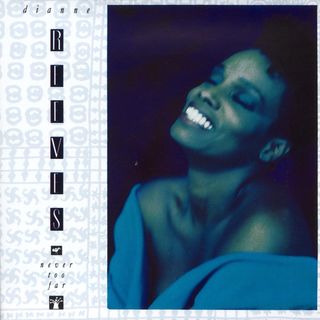
Usually classified as adult contemporary, with its late 80s/early 90s snare and sizzling reverb tails, Never Too Far boasts a tremendous sonic variety of African and Latin influences framed by Reeves' powerful, virtuosic voice and backed by a band of jazz luminaries.
Producer George Duke, who played keys with Frank Zappa and contributed synths and sequencing to Michel Jackson’s Off The Wall, imbues Never Too Far with an expressive, electric element, from the bluesy keyboards in Come In to the bouncy Synclavier in Fumilayo, gently folded into the mix.
Meanwhile, on songs such as Fumilayo and Eyes On The Prize, fusions of call-and-response and funk, Duke showcases his talent for combining complex rhythmic textures, as interlocked beats and hooks skip together with clarity and ease.
With so many competing styles, it's the quality of the production and Reeves’s vocals that make the whole record adhere. Her voice is incredibly present with a naturally open sound that's often pushed to the extremities of her range, and, as a result, Never Too Far is full of expertly captured delicate moments of vulnerability.
Find Never Too Far by Dianne Reeves on Amazon
Listen to Never Too Far by Dianne Reeves on Tidal
Aja by Steely Dan (1977)
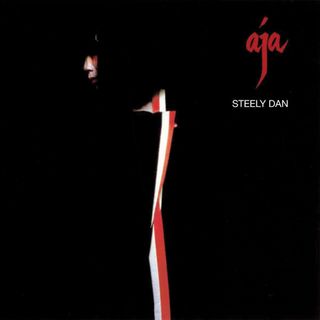
Often accused of being peddlers of yacht rock, Steely Dan are notorious for their obsessive studio process, strictly running their own sessions with military precision.
This attention to detail garnered a clutch of Grammys for their long-time engineer Roger Nichols and producer Gary Katz, as well as the devotion of live sound engineers who rely on their brand of crisp, tightly honed funk to check their rigs are all in working order.
Steely Dan's reputation for pathological rigour is well earned. On Aja, their sixth and most successful album, the band spent a year-and-a-half in the studio, remixing the album 13 times in the process and enlisting more than 40 session musicians with 19 different guitarists brought in to play versions of the guitar solo on Peg.
But to dismiss Steely Dan as sounding 'clinical' would be to deprive yourself of some of the most expert production ever committed to tape. Yes, there’s the perfect tiptoeing bass intro to Black Cow and cut-glass high-hats, but Aja is also deeply idiosyncratic, full of swerves and disorienting sounds, such as the minute-long drum solo that closes the title track performed by the legendary Steve Gadd, cloaked in otherworldly synthesizers and horns.
In 2010, Aja was added to the United States National Recording Registry for its artistic, historical and cultural significance. Even four decades after its release, it is one of the finest recordings ever made, transcending technology, taste and trend.
Find Aja by Steely Dan on Amazon
Listen to Aja by Steely Dan on Tidal
Vespertine by Björk (2001)

As a producer, Björk is no stranger to constructing whole sonic universes. While she may have more groundbreaking and avant-garde albums, 2001’s Vespertine – her first to be recorded entirely on Pro-Tools – demonstrates the Icelandic artist's mastery of complex textures. She invents a form of homespun electronica in which the interplay between synthetic and natural sounds forms an architecture of introverted chamber music.
For three years before making the album, Björk recorded noises around her home – from the shuffling deck of cards heard on Hidden Place, to feet in fresh snow on Aurora – and magnified them to create ‘microbeats’. Sounds were chosen that would maintain sonic integrity even when downloaded as an mp3, and most tracks contained 30 to 40 of these microbeats combined together in a process she described as “crocheting a huge blanket with a tiny needle”.
In an album where electronic sounds are the norm, traces of the analogue world – be it static and glitches on Cocoon, the warm harmonics of harpist Zeena Parkins or Björk's own vocals whispered at close proximity to the mic – provide welcome acoustic interjections with a sense of ecstatic domesticity and comfort in an icy landscape.
Find Vespertine by Björk on Amazon
Listen to Vespertine by Björk on Tidal
Hot Buttered Soul by Isaac Hayes (1969)
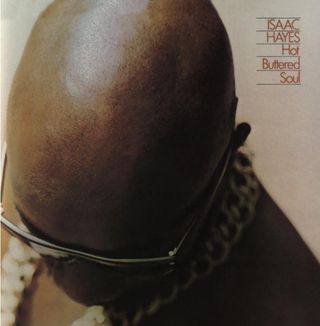
Fair to say 1968 was a difficult year for Isaac Hayes. After a decade at Stax Records as a session musician, producer and songwriter of hits including Soul Man and B-A-B-Y, he had finally released his debut album as a solo artist and it bombed.
Stax itself was in a tumult: the Memphis label lost both its biggest star Otis Redding and four members of its house band in a plane crash the year prior. Oh, and its distribution deal with Atlantic had expired contentiously, resulting in the loss of its masters.
Vice President Al Bell’s solution? To record a new back catalogue ASAP. He demanded 27 new albums by mid-1969 and called upon Hayes to quickly turn out a follow-up to his flop. Hayes reluctantly agreed with the caveat of having complete creative control. This auteurism resulted in four tracks luxuriating out over 45 minutes, blending pristine production with an opulence-laced rawness that set a precedent other artists scrambled to replicate.
Hayes played Hammond and sang the vocals live while simultaneously conducting the newly reformed Bar-Kays, laying down his performance as single takes with the process described by co-producer Marvell Thomas as: “Play whatever you want to play and have a good time doing it.”
That freedom of expression extended into post-production. The 12-minute extended remake of Burt Bacharach’s Walk On By was sweetened by string overdubs, recorded separately in Detroit to expedite the process, that crescendo and collapse into Michael Toles' slinky, psychedelic guitar building into a frenzied finale over six intense minutes.
For all its excesses, Hot Buttered Soul remains a tight, cogent, honest and intimate album with artistry infiltrating every part of the recording process.
Find Hot Buttered Soul by Isaac Hayes on Amazon
Listen to Hot Buttered Soul by Isaac Hayes on Tidal
Rumours by Fleetwood Mac (1977)
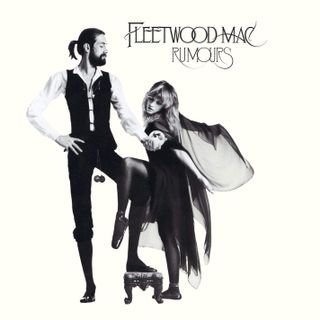
It’s a wonder that Fleetwood Mac managed to create anything at all during their recording sessions for Rumours, in the face of crumbling interpersonal relationships and hedonistic drug use. Even more remarkable is that the record became their most commercially successful album, renowned for its sonic clarity and harmonic sweetness.
Despite the soap opera behind the scenes, in the studio the band were scrupulous when it came to detail, with Lindsey Buckingham re-stringing his guitar every 20 minutes to maintain the crispness of tone while recording Never Go Back Again, and Christine McVie's Songbird being tracked during an all-night session at Zellerbach Auditorium to achieve an authentic concert hall ambience.
Songs were written by the individual members, without collaboration, the only exception being The Chain, which was cobbled together from four different tracks. It was nearly left off the album before being resurrected after Buckingham asked for it to be spliced with blank tape to add the iconic kick drum of the verse. Listen closely before the start of the song and you'll hear him softly mutter an expletive, undoubtedly one of many.
The radio-friendly sound producers Ken Caillat and Richard Dashut achieved was a result of arduous 16-hour days and an element of chance. For the first week, they struggled to get any sound out of the API console. Caillat said: “ Everything sounded like a miniature person was playing these miniature instruments, and we were just pulling our hair out.
“[We] tried everything to make the sound bigger. We even taped two kick drums together out of frustration... Finally, I got pissed off. I said, 'Goddamn it, what the hell's going on here?' And I literally just started turning knobs, and within about five minutes of doing this on a track we were trying to cut, it was sounding great.”
Find Rumours by Fleetwood Mac on Amazon
Listen to Rumours by Fleetwood Mac on Tidal
Wagner: Der Ring des Nibelungen by Georg Solti (1965)

There are more than a few reasons you might not fancy listening to a bit of Wagner. But, as the humorist Bill Nye quipped: “Wagner’s music is better than it sounds.” And Decca’s recording of Der Ring des Nibelungen, conducted by the uncompromising Georg Solti and featuring a maverick cast, is widely considered a masterpiece.
Der Ring des Nibelungen was groundbreaking as the first opera ever recorded in a studio, and it demonstrated the potential that the stereo LP format could have in making performances accessible at a time when epics were too expensive to mount regularly.
Decca producer John Culshaw saw the possibilities in stereo to present home listeners with a ‘theatre of the mind’, in which characters could cross from stage left to stage right, move forwards and back or tail off as if exiting off to the wings.
Recording took place over nine years from 1956 to1965, in the Sofiensaal in Vienna, a former sauna with a bright bathroom reverb. The room was fitted out with Decca tree mics and the ‘stage’ marked out like a chessboard to carefully position the singers.
While sound effects such as thunder or the noise of Valhalla collapsing into ruin were added technically, the studio conditions gave Culshaw the opportunity to overcome the compromises of recording live. He revelled in detail and historic accuracy, going to great lengths to replicate the impractical orchestration Wagner had originally specified, including a section of six harps, medieval steer horns and 18 anvils to be hammered at brief interludes.
The power and impact of the recording were such that Culshaw claimed: “The anvil passage and the thunderclap at the end of Rheingold became a sort of international standard by which you judged the quality of your gramophone player.”
Full of energy and devastating dramatic power, Der Ring des Nibelungen was a huge commercial success, sharing chart space with Elvis, and galvanising the classical recording industry.
Find Der Ring des Nibelungen by Georg Solti on Amazon
Listen to Wagner: Der Ring des Nibelungen by Georg Solti on Tidal
Pet Sounds by The Beach Boys (1966)
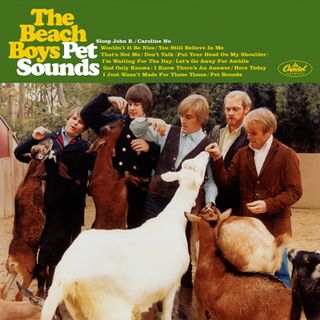
It’s hard to believe that an album ubiquitously regarded as the pinnacle of craftsmanship and aesthetic refinement could have sold so poorly on its release. Still, while the lush melancholia of Pet Sounds took the long route to public acceptance, its sonic influence was felt immediately – not least by Paul McCartney, who has said that God Only Knows spurred the recording of Sgt. Pepper's.
Brian Wilson famously refined the wall of sound technique that Phil Spector had created – so that “if the material was not the greatest, the sound would carry the record” – by separating and spreading out instruments to produce a clearer, less cacophonous feel. In this instance though, the material was pretty strong.
The tense and expensive nine months of recording sessions were managed with an iron fist by Wilson, who regarded the album as a solo project and used a huge orchestral palette with the notorious Wrecking Crew of session musicians serving as the backbone of the album.
Wilson, who is deaf in his right ear, created the final mono mix in a single nine-hour session to provide more consistency over how people would hear the album regardless of the quality or the placement of their home system. And despite numerous re-releases, purists still swear by this version, complete with its quirks, such as an audible tape splice between the chorus and bridge of Wouldn't It Be Nice and chatting during the instrumental break of Here Today.
Find Pet Sounds by The Beach Boys on Amazon
Listen to Pet Sounds by The Beach Boys on Tidal
The Black Album by Jay-Z (2003)
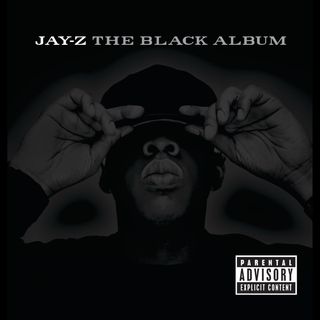
Jay-Z marked his first retirement the only way he knew how. He made an era-defining swansong, with nearly every track produced by a different luminary of the 2000s: Just Blaze, Kanye West, The Neptunes, Eminem, DJ Quik, Timbaland, 9th Wonder and Rick Rubin.
Of course, it’s not uncommon for modern albums to have vast armies of producers. But The Black Album features here because it is one of the few to make each song a sonic showcase of ‘show me what you got‘ style while maintaining a single storytelling journey.
There are many details to admire, from Kanye West's magnificent dancehall track Lucifer, made at the apex of his chipmunk era with a blown-out bass with which many speakers will struggle to grapple, to the towering organ sample in Just Blaze's Public Service Announcement.
And, while we could have filled this list solely with Rubin’s work, we’re making do with the sublime 99 Problems. Exceptional for its dry, close aesthetic combining old-school hip-hop collage (the drum track is built from samples of Mountain’s Long Red, Billy Squier’s The Big Beat, and Wilson Pickett’s Get Me Back On Time Engine #9), and pretty much no melodic content other than the cadential inflections of Jay's voice as he raps about the trappings of fame and racial inequality.
The Black Album is also notable for the production work that it inspired. Roc-A-Fella Records released an a cappella 12-inch of the album, opening the floodgates to a wealth of remixes, the most famous example being Danger Mouse’s transcendent, career-making mashup with the Beatles' own sonic masterpiece, The White Album.
Find The Black Album by Jay-Z on Amazon
Listen to The Black Album by Jay-Z on Tidal
MORE:
Mary is a staff writer at What Hi-Fi? and has over a decade of experience working as a sound engineer mixing live events, music and theatre. Her mixing credits include productions at The National Theatre and in the West End, as well as original musicals composed by Mark Knopfler, Tori Amos, Guy Chambers, Howard Goodall and Dan Gillespie Sells.
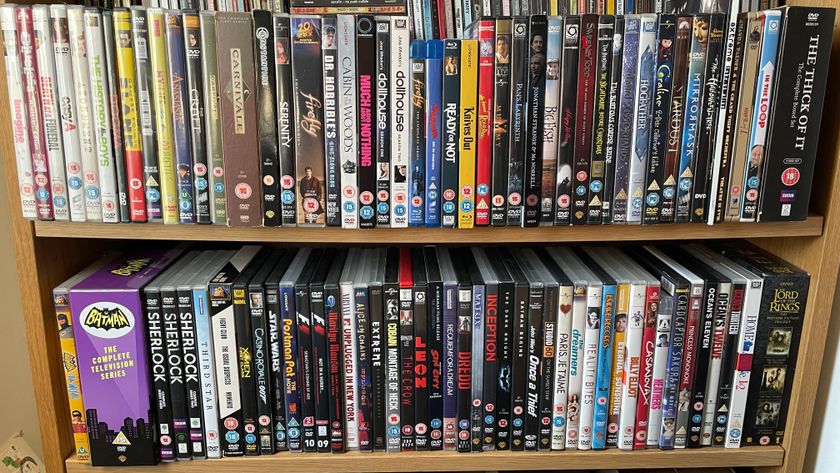





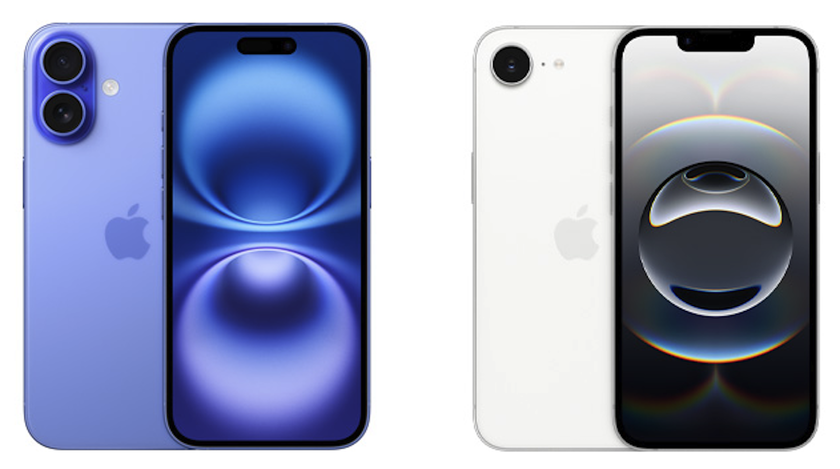
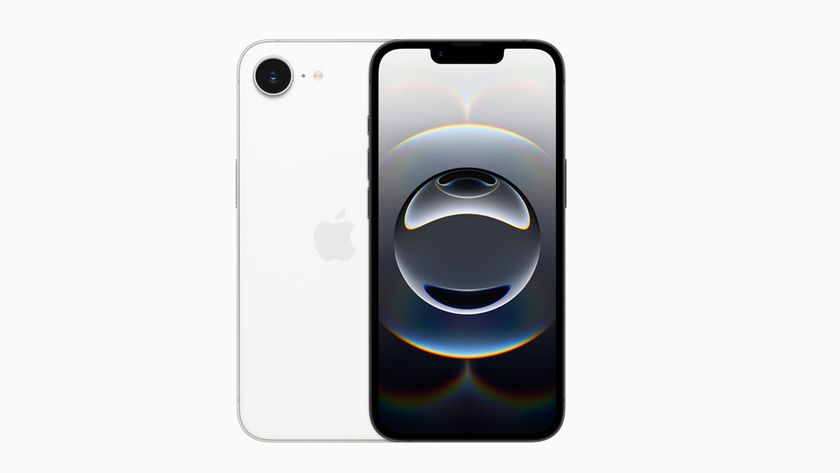
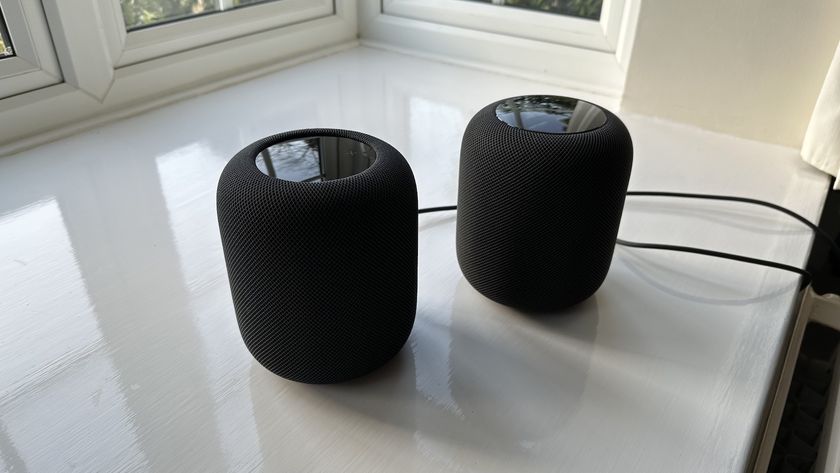
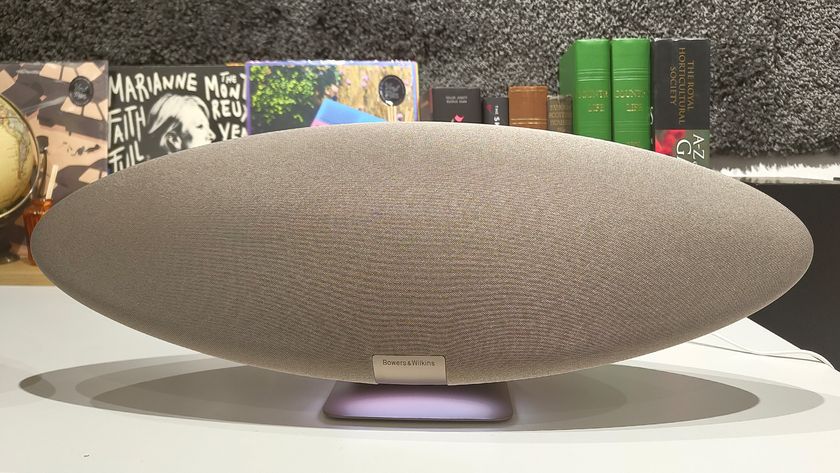


-
Nev 373 But surely, and with the greatest of respect, Fagen's Nightfly and his other related work has been done to death a bit. It's nice sometimes, to see some other stuff. I for one, on the strength of this list, will be listening to a lot more Jellyfish having now heard of them.Reply -
Wolf Reply
I don't get it. Why I take an old recording (e.g. Wagner), with all the limitation of the time, to test current or not so old speakers? It's like hooking up an mp3 player for a sound check:eek:What Hi-Fi? said:We shine a spotlight on some of the best music recordings that will show your system at its best.
12 of the best-produced recordings to test your speakers : Read more -
lovlid Reply
Are you assuming the article is talking about the first Wagner recordings? And that it was recorded when Wagner was still around? How cute.Wolf said:I don't get it. Why I take an old recording (e.g. Wagner), with all the limitation of the time, to test current or not so old speakers? It's like hooking up an mp3 player for a sound check:eek: -
Tim Honey Reply
There's probably a more constructive way to answer the question than to just be condescending. Or can't you actually explain it?lovlid said:Are you assuming the article is talking about the first Wagner recordings? And that it was recorded when Wagner was still around? How cute. -
JennaChaplin Surely there are recordings made after 2003 (19 years ago!) that are more worthy? For instance, I much prefer LVB symphonies and piano concertos made within the last 10 years - the recording equipment, and all that has been learned by engineers over the years, create a much more realistic and convincing experience. Many older recordings, including much-loved ones, are bedevilled by limiters and muddled instruments. But that's just my opinion of course.Reply
Any suggestions from other contributors to this thread? When I have time, I may make some suggestions of my own. -
freelunch Great production, yes, Steely Dan/Donald Fagen. Kamakiriad is also nice. Good to see I'm not the only one listening to Jellyfish. Overblown, maybe, but fabulous recording. I also vote for Latin Quarter, Modern Times (1985) and Big Dish, Satellites (1991). It doesn't hurt that they are excellent albums as well.Reply
I have a test CD that I take to hi-fi auditions. Each song contains elements that I look for in good equipment. (Sorry to be a bore...):
Boccherini, Concerti da Violoncello; Mary Coughlan, A Leaf from a Tree; The Civil Wars, I've Got This Friend; Alison Krauss, Baby Now That I've Found You; The Carpenters, This Masquerade; The Buena Vista Social Club, Amor de Loca Juventud; The Grateful Dead, Sugar Magnolia; Bonnie Raitt, Love Letter; The Paul Butterfield Blues Band, New Walkin' Blues; Gary Moore, Still Got the Blues; Lloyd Cole, Grace; Donald Fagen, Walk Between the Raindrops; The Cardigans, Erase/Rewind; Tom Verlaine, Ancient Egypt; Prefab Sprout, The King of Rock'n'Roll; Little Feat, Mercenary Territory (live); The Stranglers, Goodbye Toulouse; The Pretenders, Hollywood Perfume; The Veronicas (yes), Take Me On The Floor; U2, Vertigo. -
Ian AV I agree for any music genre, once the obsession of making everything louder than everything else for the mp3 mob ended. Everything inevitably got better as digital took over in the recording studio putting paid to inherent analogue harmonic distortions and the ubiquitous tape grunge. Unfortunately, much music has this artificially re-added for those who like that sort of thing. Personally, I prefer the pure, original sound like that live in a venue small enough that drums don't need amplification. That is the true sound to emulate.Reply
